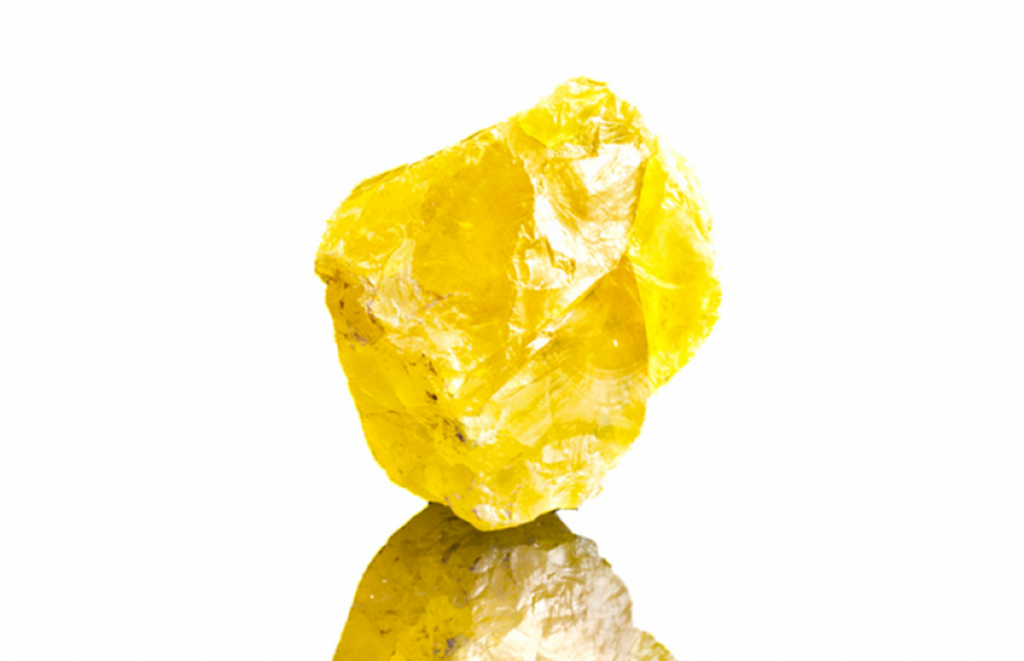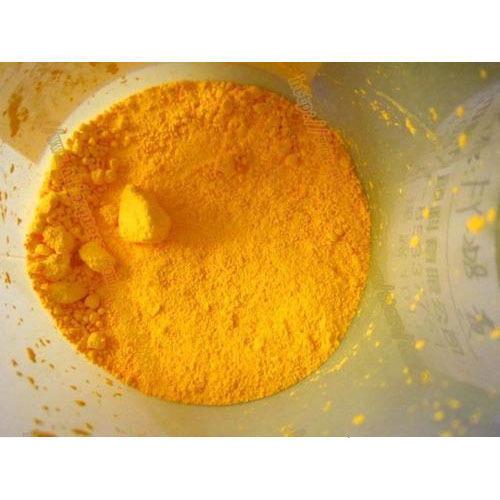Yellow Phosphorus
Yellow Phosphorus or simply tetraphosphorus (P4) exists as molecules made up of four atoms in a tetrahedral structure. The tetrahedral arrangement results in ring strain and instability. The molecule is described as consisting of six single P–P bonds.

- Overview
- Application
- Spesification
Overview
Phosphorus, (Greek: phôs meaning “light”, and phoros meaning “bearer”), is the chemical element that has the symbol P and atomic number 15. A multivalent nonmetal of the nitrogen group, phosphorus is commonly found in inorganic phosphate rocks.
Due to its high reactivity, phosphorus is never found as a free element in nature. One form of phosphorus (white phosphorus) emits a faint glow upon exposure to oxygen (hence its Greek derivation and the Latin light-bearer meaning the planet Venus as dawn-bearer or “Morning Star”).
Phosphorus is a component of DNA and RNA and essential element for all living cells. The most important commercial use of phosphorus-based chemicals is the production of fertilizers.
Phosphorus compounds are also widely used in explosives, nerve agents, friction matches, fireworks, pesticides, toothpaste, and detergents.
BIOLOGICAL ROLE
Phosphorus is a key element in all known forms of life. Inorganic phosphorus in the form of the phosphate PO43- plays a major role in biological molecules such as DNA and RNA where it forms part of the structural framework of these molecules. Living cells also utilize phosphate to transport cellular energy via adenosine triphosphate (ATP). Nearly every cellular process that uses energy gets it in the form of ATP. ATP is also important for phosphorylation, a key regulatory event in cells. Phospholipids are the main structural components of all cellular membranes. Calcium phosphate salts are used by animals to stiffen their bones. An average person contains a little less than 1 kg of phosphorus, about three quarters of which is present in bones and teeth in the form of apatite. A well-fed adult in the industrialized world consumes and excretes about 1-3 g of phosphorus per day in the form of phosphate. Phosphorus is an essential macromineral, which is studied extensively in soil conservation in order to understand plant uptake from soil systems.
Application
Concentrated phosphoric acids, which can consist of 70% to 75% P2O5 are very important to agriculture and farm production in the form of fertilizers. Global demand for fertilizers led to large increases in phosphate (PO43-) production in the second half of the 20th century. Other uses:
- Phosphates are utilized in the making of special glasses that are used for sodium lamps.
- Bone-ash, calcium phosphate, is used in the production of fine china.
- Sodium tripolyphosphate made from phosphoric acid is used in laundry detergents in several countries, and banned for this use in others.
- Phosphoric acid made from elemental phosphorus is used in food applications such as soda beverages. The acid is also a starting point to make food grade phosphates.These include mono-calcium phosphate which is employed in baking powder and sodium tripolyphosphate and other sodium phosphates. Among other uses these are used to improve the characteristics of processed meat and cheese. Others are used in toothpaste. Trisodium phosphate is used in cleaning agents to soften water and for preventing pipe/boiler tube corrosion.
- Phosphorus is widely used to make organophosphorus compounds, through the intermediates phosphorus chlorides and the two phosphorus sulfides: phosphorus pentasulfide, and phosphorus sesquisulfide. Organophosphorus compounds have many applications, including in plasticizers, flame retardants, pesticides, extraction agents, and water treatment.
- Phosphorus is also an important component in steel production, in the making of phosphor bronze, and in many other related products.
- White phosphorus is used in military applications as incendiary bombs, for smoke-screening as smoke pots and smoke bombs, and in tracer ammunition.
- Red phosphorus is essential for manufacturing matchbook strikers, flares,, safety matches, pharmaceutical grade and street methamphetamine, and is used in cap gun caps.
- Phosphorus sesquisulfide is used in heads of strike-anywhere matches.
- In trace amounts, phosphorus is used as a dopant for N-type semiconductors.
- 32P and 33P are used as radioactive tracers in biochemical laboratories (see Isotopes).
Spesification
| PRODUCT IDENTIFICATION | |
| CAS NO. | 7723-14-0 |
| EINECS NO. | 231-768-7 |
| FORMULA | P4 |
| MOL WT. | 123.88 |
| H.S.CODE | 2804.70 |
| TOXICITY | Oral rat LD50: 3030 ug/kg |
| SYNONYMS | Phosphorus (white); Phosphorous yellow; Phosphorus (red);Black Phosphorus; Fosforo Bianco (Italian); Gelber Phosphor (German); Phosphore Blanc (French); Phosphorous (White); P Tetrafosfor (Dutch); Tetraphosphor (German); Violet Phosphorus; Weiss Phosphor (German); |
| PHYSICAL AND CHEMICAL PROPERTIES | |
| PHYSICAL STATE | a number of allotropic forms |
| MELTING POINT | 44 C (white), 590 C (red) |
| BOILING POINT | 280 C (white), sublimes (red) |
| SPECIFIC GRAVITY | 1.82 (white), 2.34 (red), 2.70 (black) |
| SOLUBILITY IN WATER | insoluble |
| NFPA RATINGS | Health: 3 Flammability: 0 Reactivity: 1 |
| FLASH POINT | 30 C(white), 260 C(red) |
| STABILITY | Stable under ordinary conditions |
| SALES SPECIFICATION | |
| WHITE/YELLOW PHOSPHORUS | |
| APPEARANCE | white to straw yellow waxy solid |
| ASSAY | 99.0% min |
| INSOLUBLES IN DILUTE NITRIC ACID | 0.1% max |
| ACIDITY (H3PO4) | 0.2% max |
| SULFUR | 0.1% max |
| RED PHOSPHORUS | |
| APPEARANCE | red to violet amorphosus powder |
| ASSAY | 98.5% min |
| SOLUBLES IN WATER | 1.0% max |
| WHITE PHOSPHORUS | 0.003% max |
| MOISTURE | 0.25% max |
| ACIDITY (H3PO4) | 0.1% max |



